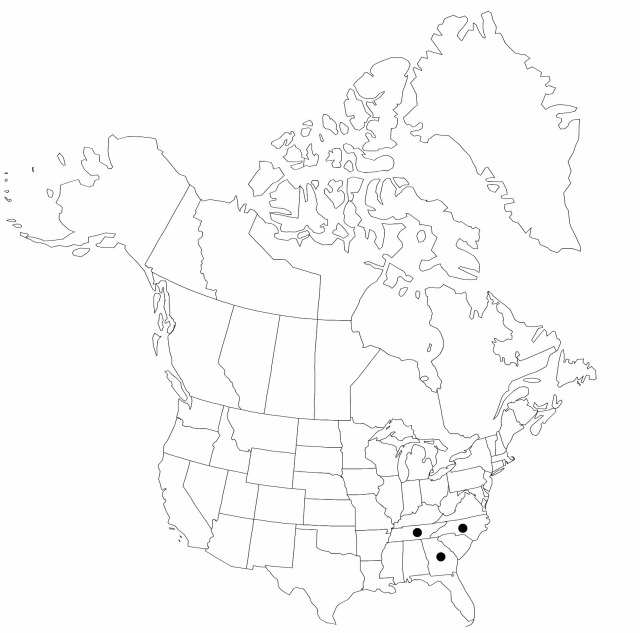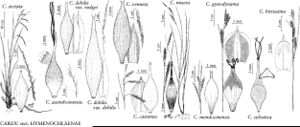Carex misera
Amer. J. Sci. Arts 45: 173. 1843.
Plants densely cespitose. Culms dark maroon at base; flowering stems 25–50 cm, as long or slightly longer than leaves at maturity, 0.4–0.6 mm thick, glabrous, sometimes scabrous on angles within inflorescence. Leaves: basal sheaths maroon, bladeless, pubescent, often only sparsely so; others grading from maroon to green on back, brown-hyaline on front, red dotted and pubescent toward apex; blades flat, 1–2 mm wide, sparsely pilose on adaxial surface, margins ciliate. Inflorescences: peduncles of lateral spike 0–35 mm; peduncle of terminal spike 5–35 mm, minutely scabrous; proximal bracts equaling or often exceeding inflorescences; sheathless and auriculate or with sheaths less than 3 mm; blades to 1 mm wide. Lateral spikes 1–3, 1 per node, each overlapping 1 above but not crowded, proximal 1 often well separated, erect to ascending, sessile or pedunculate, pistillate with 10–25 perigynia attached less than 1 mm apart, narrowly elongate, 10–35 × 2–3 mm. Terminal spike staminate, 10–24 × 1.5–2.5 mm. Pistillate scales reddish brown with narrow hyaline margins and green midrib, ovate, shorter than mature perigynia, apex rounded to acute or cuspidate, glabrous. Perigynia green, usually red dotted, 2-ribbed and conspicuously 6–10-veined, narrowly lance-ellipsoid, loosely enveloping achene, 4–4.8 × 1.2–1.5 mm, membranous, base with stipe 1 mm, apex gradually tapering to beak, pubescent toward apex; beak truncate or minutely toothed, 1 mm. Achenes substipitate, 2–2.5 × 0.8–1 mm.
Phenology: Fruiting summer.
Habitat: Rock ledges, cliffs, balds in s Appalachians
Elevation: 900–1900
Distribution

Ga., N.C., Tenn.
